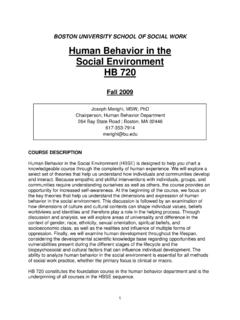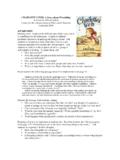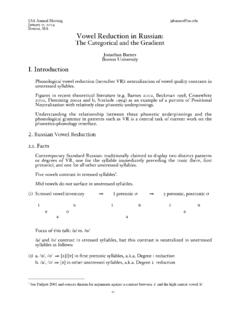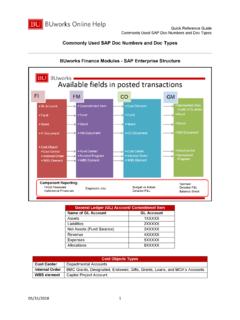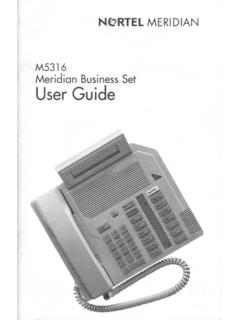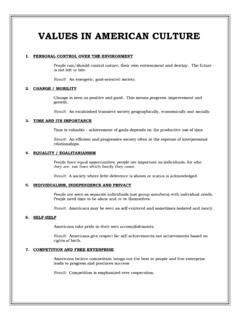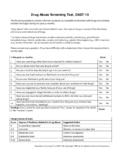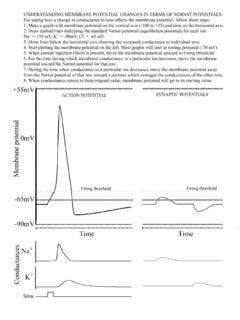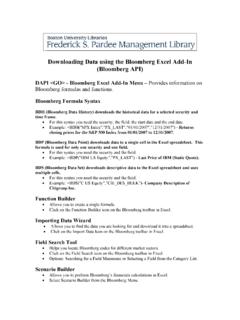Transcription of Tool 5: How To Conduct a Postdischarge Followup Phone Call
1 Tool 5: How To Conduct a Postdischarge Followup Phone Call87. 1. Purpose of This ToolThe Re-Engineered discharge (RED) aims to effectively prepare patients and families for discharge from the hospital, improve patient and family satisfaction, and decrease hospital readmission rates. The Postdischarge Followup Phone call , the 12th component of the RED, is an essential part of supporting the patient from the time of discharge until his or her first appointment for Followup care. Tool 2, How To Begin Implementing the RED, discusses the options for assigning staff to Conduct the RED patients should be called 2 to 3 days after discharge by a member of the clinical staff.
2 This Postdischarge Followup Phone call allows the patient s actions, questions, and misunderstandings, including discrepancies in the discharge plan, to be identified and addressed, as well as any concerns from caregivers or family members. Callers review each patient s:Health status,Medicines,Appointments,Home services, andPlan for what to do if a problem tool addresses the person who will make the Followup Phone call . After reading this tool, you will:Know how prepare for the Phone proficient in completing a Postdischarge Followup Phone able to Conduct appropriate postcall 2. Preparing for the Phone Call89.
3 Ensure Continuity of CareIf you are the discharge educator (DE) who provided the in-hospital RED components, you will be familiar with the patient. This will help you maintain continuity between the inpatient stay and the Followup call . Still, you need to recognize that your patient is now in a different setting and you may need to tailor your communication style to the patient s current your hospital has chosen to use a different person to provide the in-hospital RED components and to complete the call , you should:Communicate with the DE in order to have a smooth handoff and obtain important information about the patient and family that the DE has learned while working with the yourself with the patient by reviewing the information about the hospital stay thoroughly.
4 (See Section below.)The remainder of this tool will instruct you as if you are not the Learn How To Confirm UnderstandingThroughout the Followup call , you will need to confirm that the person you are speaking with understands what you are discussing. One of the easiest ways to close the communication gap between patients and educators is to use the teach-back method. Teach-back is a way to confirm that you have explained to the patient what he or she needs to know in a manner that the patient understands. Patient understanding is confirmed when he or she explains the information back to you in his or her own words.
5 Lack of understanding and errors can then be rectified with further directed teaching and reevaluation of video demonstration of the teach-back method is available at: Some points to keep in mind include:This is not a test of the patient s knowledge; it is a test of how well you explained the sure to use this technique with all your patients, including those who you think understand as well as those you think are struggling with your patients cannot remember or accurately repeat what you asked them, clarify the information that you presented and allow them to teach back again. Do this until the patient can correctly describe your directions in his or her own Gather Necessary DocumentationBefore the Phone call , obtain the patient s hospital discharge summary, the After Hospital Care Plan (AHCP), and the DE s notes.
6 If the discharge summary is not complete or if an AHCP was not generated for the patient, you will need to collect this information from other sources. These may include the hospital medical record, notes from the clinician who discharged the patient, the inpatient clinicians who cared for the patient, and the ambulatory medical Review Health History and discharge PlansYou will need to be familiar with the patient s health history and discharge plan before you make the Followup Phone call . Review the discharge summary and AHCP to find out about:Diagnosis and condition at discharge . You will ask the patient about his or her health status and discuss information, usual daily routines, relevant cultural practices, involvement of family, and relevant stressors and supports.
7 This will help you make the call patient appointments. You will find out whether appointments have been completed and plans for future services and equipment. You will confirm that home services and equipment have been delivered as expected and discuss the need for additional home Check Accuracy and Safety of Medicine ListsWhile the patient was in the hospital, the DE should have completed medication reconciliation. The goal of inpatient medication reconciliation is to produce a correct and consistent list for the patient and clinicians, where the medication lists are identical in the discharge summary, inpatient medical record, AHCP, and, if possible, the ambulatory medical certain cases, however, this may not have happened ( , patient leaves against medical advice or sooner than expected, patient is discharged at a time when a DE was not available).
8 To check whether the patient has been given an accurate medicine list, compare the list of medicines on the hospital discharge summary with the medicines listed in the AHCP. If medication reconciliation was done correctly at discharge , these lists should match. If they do not match, resolve the issue before the Followup Phone call by talking to the hospital team (starting with the DE) and/or primary care provider (PCP),i depending on the nature of the inconsistencies or errors the medicine list for potentially harmful drug interactions. This should have been done as part of the in-hospital medication reconciliation process but may not have been completed for the reasons discussed above.
9 If you identify any drug interactions, speak with the hospital team (starting with the discharging physician) to get clarification and make any necessary changes to the patient s Identify Problems Patients Could Have With MedicinesChanges in medicine regimens can be particularly confusing to patients returning home. Note changes such as discontinuation of medicine taken prior to the hospital stay or a change in the dose. Any medicine with complicated instructions can also be a source of confusion. Pay special attention to medicines for which the adverse consequences of taking them incorrectly are yourself with commonly known drug-food interactions and side effects prior to the call .
10 This will enable you to actively elicit this information from the patient, as well as educate him or her on possible side Arrange for Interpreter ServicesThe DE should have noted on the contact sheet (see Appendix A) whether an interpreter is needed for the Phone call . If an interpreter is needed and your hospital has not documented that you are proficient in the language, arrange for interpreter services before the call . You can use a qualified hospital interpreter by using a speakerphone in a private location or a three-way Phone system. You may also use a telephone interpreter that your hospital contracts with.

